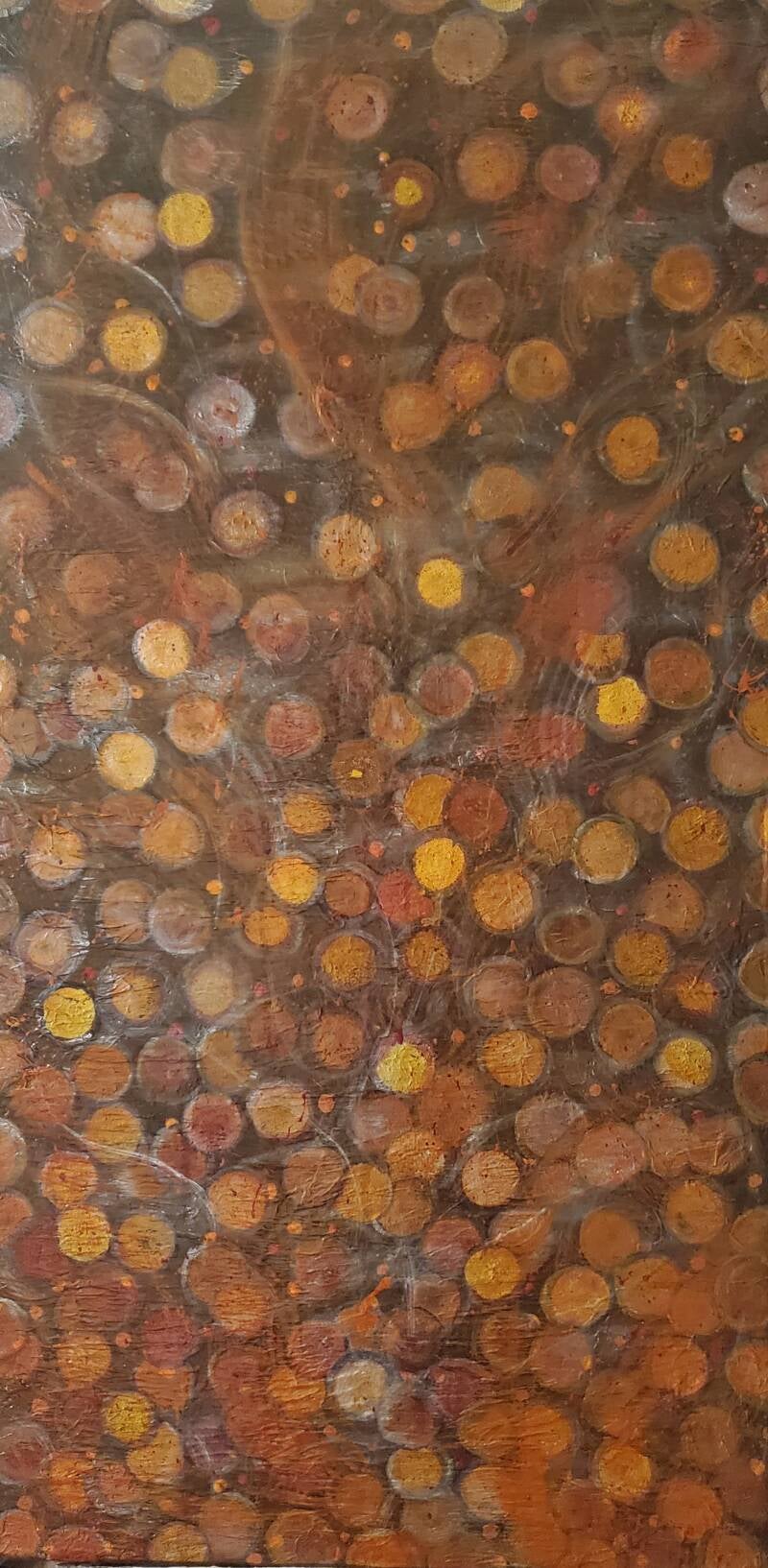
Acrylic Abstract Art by Leigh Palmer
Indigenous Artist from Kingston, Ontario, Canada

Through art, Leigh creates a unique perspective of how to remember, heal and move forward. Of Mohawk decent, she honors the generations before her and the indigenous community of today. Her acrylic, abstract style allows the viewer to feel a deep sense of reflection. "The portrait series is my favorite. It continually reminds me that we are all connected. Painting has been my most precious source of healing."
Where It All Began

It all started with three pieces named "The Feminine Warrior Series" during the spring of 2024. "It was an honor to have my work hung in a gallery next to incredible indigenous artists."
They sold quickly, and the journey began. "I paint almost every day, in a way that my spirit inspires me."
Leigh's paintings are displayed at Native Renaissance in Tyendinaga, Ontario.
Respecting the Indigenous Story of Canada
It's important to Leigh, to never forget. She strives for equality and respect for all.
"When we remember where we come from, we feel the value in where we are going."
MMIW
She is rising above harm and walking towards equality, fairness, and kindness. This collection reflects strength,
healing, and hope for the future. I will continue to paint her until her story is recognized and honored as it should be.

A call to action, Leigh paints a number of pieces depicting indigenous women wearing a red dress. She describes this piece as a means to create awareness of the tragedy of Missing and Murdered Indigenous Women.
"Those of us who fight for the sisters we miss will continue to create awareness, grieve, and heal."
The Assembly of First Nations notes that "Indigenous women make up 16% of all female homicide victims, and 11% of missing women, yet Indigenous people make up only 4.3% of the population of Canada."
They vow to "the critical situation of violence, disappearance, and murder of First Nations women, girls, and gender-diverse people."
Still More Work To Do

When The Children Cry
My heart sank in pain when the news came from the Tk'emlúps te Secwépemc First Nation that the remains of 215 children were found on the grounds of the former Kamloops Indian Residential School. I could hear nothing but a distant humming. There was silence all around me. I couldn’t even cry. I knew at the level of my soul, that it would be one of my greatest challenges to process the level of anger and sorrow I felt. 215 quickly became a sacred cry to remind us of the thousands of little souls lost in the genocide of a sacred culture across Turtle Island.
Each orb in 215: When the Children Cry represents one of the little souls lost. Each one is painted with 7 layers, to honor the Seventh Generation Principle, based on an ancient Haudenosaunee (Iroquois) philosophy that it takes seven generations to heal the consequences of choices made. Here we are today, finally aware. There is still so much to be done.
"This piece has to be the most challenging one that I have created so far. I could only spend a short time
before needing to walk away, only to return to more sorrow and healing."
The viewer is encouraged to touch the painting, and rub their hand against the texture that represents
the soil from which these lost little souls have had to rise.
After viewing the piece: “I like the dual meaning of the red whisps and undertones, it’s the creator carrying the souls of the children lost, back to Turtle Island, but, also representative of the senseless bloodshed of the innocent children. Like they’re bleeding out. It makes you feel uncomfortable but in a thought provoking way. Like someone took hold of your heart and stopped it beating for a second in their hands.” - Rachel
leigh@artbyleigh.online
Socials